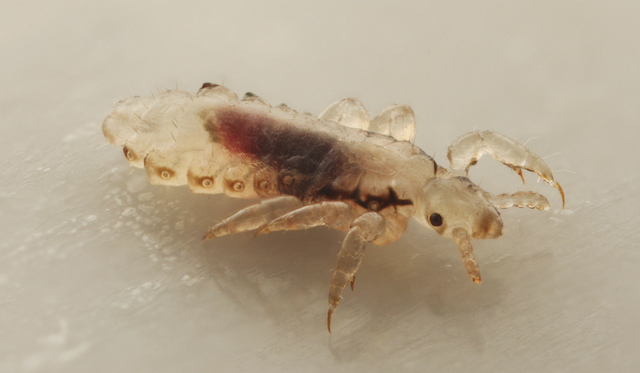
There is currently a lot of buzz about super lice – or mutant lice – which might conjure up some horrifying images of 20-foot tall blood-sucking insects (or just make your scalp suddenly feel itchy). Fortunately, the reality of super lice is much less terrifying when put in perspective. The terms “super” and “mutant” have come about to describe lice that are resistant to drug treatments for head lice that contain the chemical permethrin. This chemical is found in most over-the-counter head lice treatments, which have been used for decades to treat outbreaks of head lice commonly seen in elementary school classrooms. Read on to understand how super lice have built up an immunity to permethrin-based treatments, and discover the steps you can take to treat these resistant insects.
A Closer Look at Head Lice
Head lice are not a major health threat, since they do not spread disease to humans. They are, however, a big nuisance that can cause itching and irritation (along with the heebie-jeebies). These very tiny parasitic insects live on the scalp, in the eyelashes, and in the eyebrows, and they spread through head-to-head contact from person-to-person. Lice are most common in children, which is due in part to the close contact kids have with one another on the playground and in the classroom. Still, you might wonder why the parent of a child with lice might not ever have these insects on his or her own head. Interestingly, the skin actually becomes more acidic throughout the aging process, so adult scalps are naturally less hospitable for lice seeking a new home.
Chemical-Resistant Lice
Now that you know a little bit about how lice live and spread, let’s take a look at how lice have turned into super bugs that do not die off with chemical treatment. As noted earlier, most lotions and shampoos for lice contain a chemical called permethrin. When these products are used repeatedly, new generations of head lice will naturally build up a resistance to the active ingredient. The rate of resistance is not consistent from state to state, but there is an overall pattern of failed treatment with the same products that have effectively killed off head lice in the past. It’s also important to note that no product to treat lice will kill recently laid eggs, so a second line of treatment is almost always necessary, even when you aren’t dealing with super lice.
Treatment for Modern Super Bugs
Fortunately, there are remedies that can target super lice even when over-the-counter products containing permethrin don’t do the trick. A new product with the drug invermectin has recently been approved by the FDA and is available by prescription. Experts also advise parents to use lice combing, which does require patience and persistence, but will work to eliminate adult lice and their eggs. Some parents will tout “natural” remedies like applying mayonnaise on the scalp to suffocate lice, but these remedies are unproven and likely to lead to some unnecessary discomfort.
If your child does come home from school with head lice, don’t panic. A quick consultation with a MeMD provider can help you to get the right medication to treat lice, along with helpful tips for combing and prevention, to keep lice out of your home for good.
The post Creepy Crawly Mutants: What You Should Know About Super Lice appeared first on MeMD.